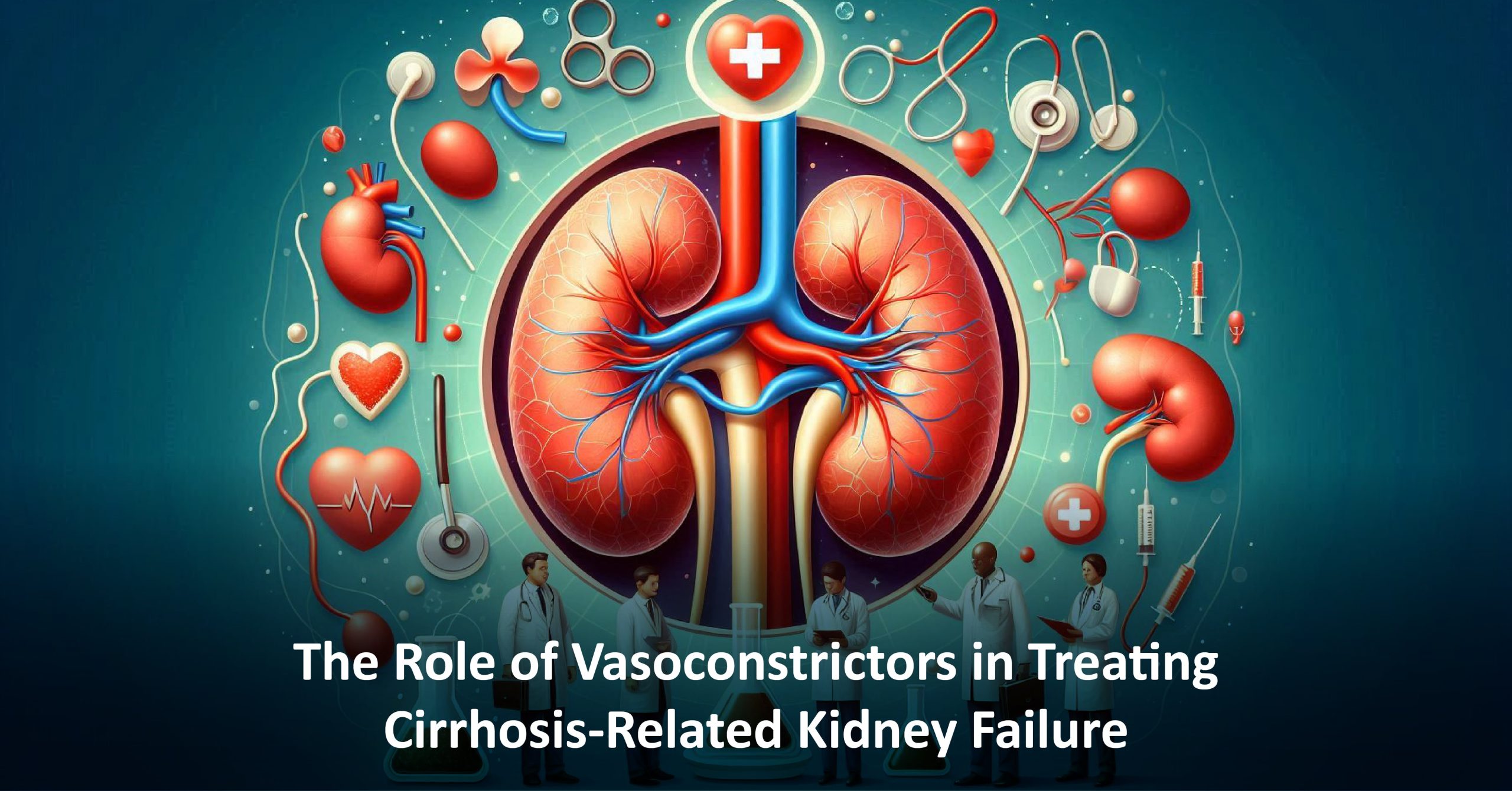Other Vasoconstrictors: Noradrenaline and Midodrine
Although terlipressin is still the first-line drug for the treatment of HRS, other vasoconstrictors such as noradrenaline and midodrine have also recently been shown to be effective, especially in areas where terlipressin is not available or is not indicated for a specific patient. Noradrenaline is an adrenergic agonist that has been studied as an alternative to terlipressin because of its vasoconstrictive effects. It is thought to induce alpha-1 adrenergic receptor stimulation that leads to an increase in systemic vascular resistance and enhancement of renal perfusion.
This comparative efficacy of noradrenaline and terlipressin in this study indicates that the drugs are equivalent when used to reverse HRS. Therefore, it is a valid alternative source, especially in locations where funding is a challenge. Additionally, the cost is cheaper than that of terlipressin, hence a more viable option in places that spend quite a lot on healthcare.
Another vasoconstrictor often administered in combination with octreotide and albumin is midodrine, especially in HRS patients. The drug midodrine, as its name implies, refers to an alpha-adrenergic agonist that results in improved vascular tone and blood pressure. Octreotide, a somatostatin analogue, results in improved renal function, mediated by inhibiting the release of vasodilators like glucagon. Therapy with the combination of this drug has proven to be associated with improved renal function in Type 1 and Type 2 HRS patients. However, in contrast to terlipressin, the evidence with regard to the use of the former is relatively weak.
Combination Therapies in HRS Treatment
In addition to the vasoconstrictor monotherapy, combination treatments have had impressive uses in treating HRS. The combination of octreotide, midodrine, and albumin has been studied in both type 1 and type 2 HRS and has led to better renal function and survival in some patients. Such combination therapy raises vascular tone by administering midodrine simultaneously, diminishes vasodilatory mediators through octreotide use, and expands plasma volume through its use of albumin.
In well-responding patients with combination therapy, serum creatinine and urine output show substantial improvement to be two major markers of renal function. Marked effects were noted only in patients suffering from Type 2 HRS, where the pace of disease progression slows and renal improvement can follow at a gentle pace.
While these therapies have been generally successful, it is worth noting that vasoconstrictor therapies are often considered transient measures in the treatment of HRS, or bridging measures to liver transplantation. Many patients who show an initial response to vasoconstrictors will eventually go on to need a liver transplant to take care of their underlying liver disease.
Limitations and Side Effects of Vasoconstrictor Therapy
Vasoconstrictors are useful in the treatment of cirrhosis-related renal failure; however, they are not devoid of their side effects. These include hypertension, cardiac arrhythmias, and ischemic complications in the presence of pre-existing cardiovascular diseases. Treatment should thus be monitored to prevent complications associated with excessive vasoconstriction.
Another major side effect of vasoconstrictor therapy is the huge difference in the response among various groups of patients. Terlipressin and the other vasoconstrictors are highly effective in Type 1 HRS, but their role in Type 2 HRS is not well defined, and the duration of response to these drugs may vary considerably among patients. Such patients also have severe cardiovascular dysfunction and, hence, cannot tolerate these drugs satisfactorily and would pose an added difficulty to treatment.
Conclusion
Vasoconstrictor drugs now play an essential role in the management of cirrhosis-related kidney failure, hepatorenal syndrome being one of the most important applications. Terlipressin remains the gold standard treatment for Type 1 HRS, with important improvements of renal function and survival within the short term. Noradrenaline and midodrine offer further valid alternatives, particularly when terlipressin is not available. Combination therapies with vasoconstrictors, octreotide and albumin, are promising in bridging to liver transplantation for managing both Type 1 and Type 2 HRS. Vasoconstrictors are not without monitoring and are generally included in a multi-faceted treatment designed to treat complications rather than definitive treatments for cirrhosis and its consequences.
References
- Sagi, S.V., Mittal, S., Kasturi, K.S. and Sood, G.K., 2010. Terlipressin therapy for reversal of type 1 hepatorenal syndrome: a meta‐analysis of randomized controlled trials. Journal of gastroenterology and hepatology, 25(5), pp.880-885.
- Gluud, L.L., Christensen, K., Christensen, E. and Krag, A., 2010. Systematic review of randomized trials on vasoconstrictor drugs for hepatorenal syndrome. Hepatology, 51(2), pp.576-584.
- Nazar, A., Pereira, G.H., Guevara, M., Martín‐Llahi, M., Pepin, M.N., Marinelli, M., Solá, E., Baccaro, M.E., Terra, C., Arroyo, V. and Ginès, P., 2010. Predictors of response to therapy with terlipressin and albumin in patients with cirrhosis and type 1 hepatorenal syndrome. Hepatology, 51(1), pp.219-226.
- Wong, F., Nadim, M.K., Kellum, J.A., Salerno, F., Bellomo, R., Gerbes, A., Angeli, P., Moreau, R., Davenport, A., Jalan, R. and Ronco, C., 2011. Working Party proposal for a revised classification system of renal dysfunction in patients with cirrhosis. Gut, 60(5), pp.702-709.
- Ginès, P. and Schrier, R.W., 2009. Renal failure in cirrhosis. New England Journal of Medicine, 361(13), pp.1279-1290.
- Camus, C., Lavoué, S., Gacouin, A., Compagnon, P., Boudjéma, K., Jacquelinet, C., Thomas, R. and Le Tulzo, Y., 2009. Liver transplantation avoided in patients with fulminant hepatic failure who received albumin dialysis with the molecular adsorbent recirculating system while on the waiting list: impact of the duration of therapy. Therapeutic Apheresis and Dialysis, 13(6), pp.549-555.
- Seo, Y.S., Jung, E.S., An, H., Kim, J.H., Jung, Y.K., Kim, J.H., Yim, H.J., Yeon, J.E., Byun, K.S., Kim, C.D. and Ryu, H.S., 2009. Serum cystatin C level is a good prognostic marker in patients with cirrhotic ascites and normal serum creatinine levels. Liver International, 29(10), pp.1521-1527.
